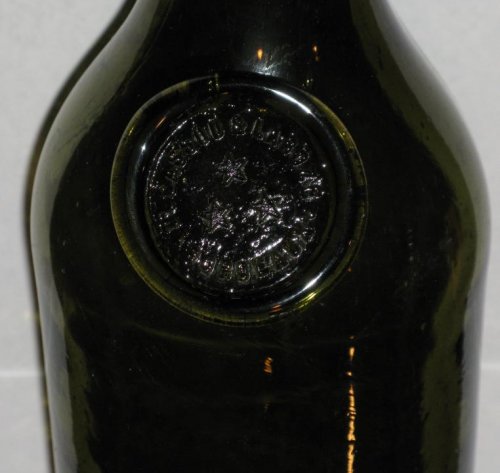Last weekend we finally made it to the bottom of what I am calling the "Sand Pit".
The story begins last winter, when I probed some deep trash on a lot here in Texas. I could tell when I probed it that there was going to be trouble; the area was very soft and was clearly sand rather than the clay we normally encounter. I dug a test hole into the side of it and just got to the top of the trash before the hole slumped into a soupy, sandy, and ever-enlarging quagmire due to the water entrained in the sand. I gave up but found enough in the test hole to pique my interest...pulled out about 20 British stoneware beers and some blackglass that showed that this was an 1870's trash pit.
Fast forward to this past weekend. It has been fairly dry here in Texas and we decided to finally give the hole another try. I got there just as the sky was lightening and was about 4' down when my digging partner showed up. On these hot Texas summer days it is always important when digging big holes to have two people or you'll never finish them. We got into the top of the bottles and although it was wet, the water and sand was manageable. By 11:00 we had a 7' deep hole roughly 6' in diameter dug out...
We found the following, all from the late 1860's and early 1870's:
(2) Cumberland Sauce bottles from Bridgeton, NJ
(1) Barrel mustard bottle
(2) Hostetters bitters (in standard amber...there was a light yellow-green heartbreaker as well)
(1) 3-piece mold blackglass bottle
(3) Spun wines
(20+) British stoneware beers of different styles
(1) Local blob top soda with a crack in the base
(1) Sealed wine bottle (Ducassou & Laroze Bourdeaux)
That was the tally. Lots of broken stuff as well. I had hoped for more local stuff but wasn't to be...the sealed wine appears to be pretty uncommon as I can't find another example. The Cumberland Sauce bottles are pretty cool too...we usually just dig Lea & Perrins bottles. Nonetheless, a summer dig in Texas!

The story begins last winter, when I probed some deep trash on a lot here in Texas. I could tell when I probed it that there was going to be trouble; the area was very soft and was clearly sand rather than the clay we normally encounter. I dug a test hole into the side of it and just got to the top of the trash before the hole slumped into a soupy, sandy, and ever-enlarging quagmire due to the water entrained in the sand. I gave up but found enough in the test hole to pique my interest...pulled out about 20 British stoneware beers and some blackglass that showed that this was an 1870's trash pit.
Fast forward to this past weekend. It has been fairly dry here in Texas and we decided to finally give the hole another try. I got there just as the sky was lightening and was about 4' down when my digging partner showed up. On these hot Texas summer days it is always important when digging big holes to have two people or you'll never finish them. We got into the top of the bottles and although it was wet, the water and sand was manageable. By 11:00 we had a 7' deep hole roughly 6' in diameter dug out...
We found the following, all from the late 1860's and early 1870's:
(2) Cumberland Sauce bottles from Bridgeton, NJ
(1) Barrel mustard bottle
(2) Hostetters bitters (in standard amber...there was a light yellow-green heartbreaker as well)
(1) 3-piece mold blackglass bottle
(3) Spun wines
(20+) British stoneware beers of different styles
(1) Local blob top soda with a crack in the base
(1) Sealed wine bottle (Ducassou & Laroze Bourdeaux)
That was the tally. Lots of broken stuff as well. I had hoped for more local stuff but wasn't to be...the sealed wine appears to be pretty uncommon as I can't find another example. The Cumberland Sauce bottles are pretty cool too...we usually just dig Lea & Perrins bottles. Nonetheless, a summer dig in Texas!


